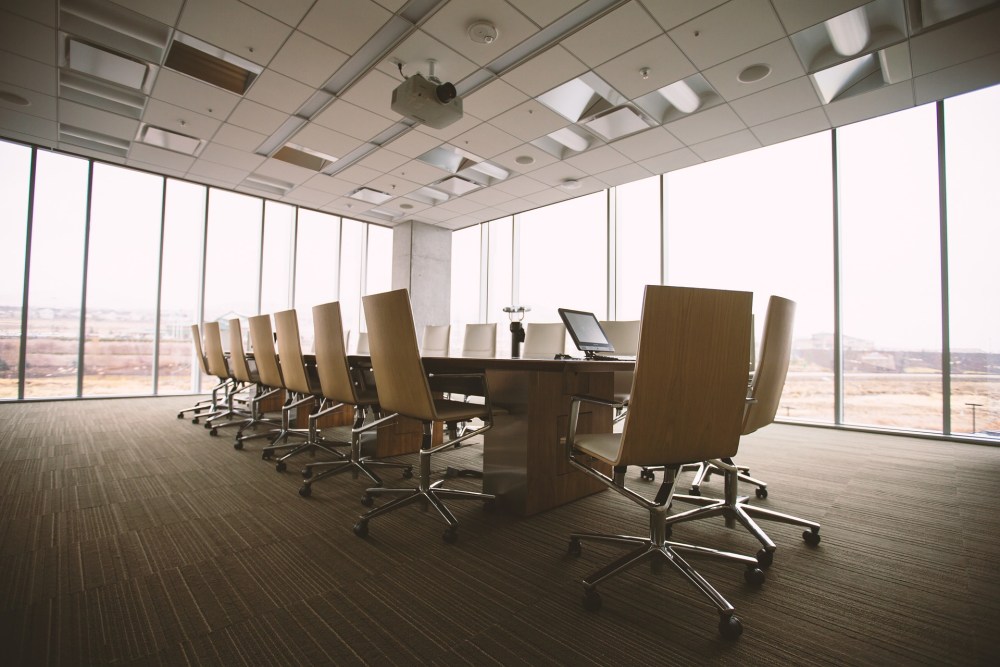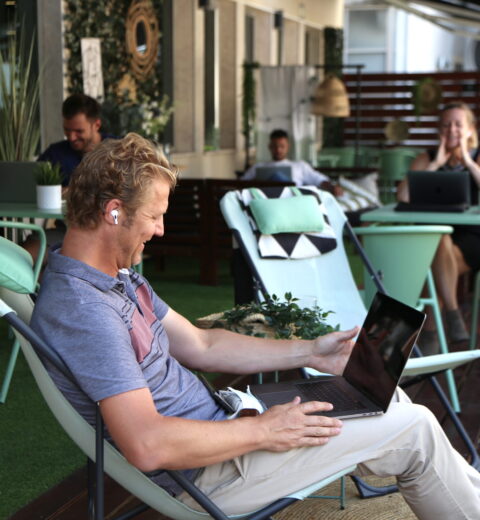The Science Of Office Acoustics – And Why It Matters
Most of us know on an intuitive level that it’s easier to concentrate and get work done in a quiet space with minimal distractions. However, whilst the more tangible aspects of office design (such as layout, lighting, desks, and so on) are usually at the forefront of the mind when crafting the perfect office, acoustics continue to be an overlooked and frequently forgotten consideration.

With the proliferation of open-plan office schemes today, distracting background noise has become something of a regrettable norm. But what does this noise actually mean for employee productivity and satisfaction – and what can be done about it?
What do we mean by workplace noise?
Background sound in an office space is, to some extent, simply a fact of life. Whether it be the ringing of telephones, the whirring of printers and photocopiers, the gossip of co-workers, the hum of the air conditioning, the incessant clattering of fingers on keyboards or the sounds of nearby traffic filtering through an open window – offices can sometimes be inherently distracting spaces in which to work.
Of course, not all soundis actually noise. To some extent, a certain level of background ambience is a good thing – and it can be just as difficult to concentrate in a space that is uncannily quiet as it is to get work done in a cacophonous hubbub of people and machinery.
A 1970 study by E.C.Keighley, still referenced by experts today, examined 2,000 employees across 40 offices and came to the conclusion that the decibel level of normal background ambience was essentially irrelevant to the perceived “acceptability” of said background sound to the workers. Instead, the researcher found that “unacceptable” noise levels were mostly reported in situations of distinctive decibel peaks.
In other words, even a relatively loud office can be acceptable, if that is the consistent ambient norm. It is loud deviations from the norm – a suddenly ringing telephone, a vehicle outside the window angrily honking its horn, somebody slamming a door, a loud conversation conducted nearby – that really disrupt concentration and cause annoyance.
The effects of a noisy workplace
It’s common knowledge that noise makes
concentration difficult, and of course, scientific analysis confirms this.
For example, there is a well-established scientific concept known as the “irrelevant speech effect” (or the “irrelevant
sound effect”), which states that distractions by nearby human speech sounds –
which don’t have to be uttered in a language understood by the subject, or even
comprised of real words at all – can significantly hamper an individual’s
ability to perform a simple memory recall task.
A study from 2005 asked 88 respondents from two offices to rate how they thought their concentration was affected by different common types of office noise – those being the ringing of telephones (answered and unanswered), printer sounds, keyboard noise, computer noise, outside noise, and conversations (conducted either in person between nearby coworkers, or overheard phone discussions).
Telephone-related noise events were voted the most distracting by the survey’s respondents, with unanswered ringing phones voted in joint first place with “other people’s phone conversations” breaking concentration by equal amounts. Another study conducted by Saint-Gobain Ecophon in 2014 later corroborated this finding, reporting that 67% of its respondents also cited telephone disturbance as the most common foil to their concentration.
Additionally, both studies found the conversations of coworkers to be moderately off-putting, while computer and typing noises were revealed to be among the least distracting of the sounds polled.
Furthermore, the 2005 study showed that 57% of its participants agreed that at least one type of office noise disruption was causing them to commonly suffer a “major deterioration” of their concentration, and almost all (99%) reported feeling that they routinely experienced at least a “slight deterioration”.
Combatting office noise
It seems clear that employees in a noisily
distracting office are unlikely to be able to work to their full productive
potential – so what can be done about this?
There are a number of solutions that could be adopted, depending on the
specific requirements of the office. For example, some businesses may want to
furnish their staff with noise-cancelling headphones, allowing them to block
disturbances in their environment – although this will potentially involve a
large and ongoing cost, and might cause communication problems by creating a
workplace in which nobody can hear anybody else!

Another approach, perhaps counter-intuitively, could be to add sound to the office. Some businesses have found that by adding a constant ambient sound (such as rainfall, waterfalls, ocean waves, or instrumental music), the peaks of distracting sound can be smoothed over and rendered less noticeable – in accordance with the aforementioned principle observed by E.C.Keighley in the 1970s.
This may not work for everybody, however, and some people seem to find working with ambient noise easier than others. This isn’t just conjecture; a study conducted in Glasgow in 2007 found that introverts have a more difficult time than extroverts when attempting to concentrate in environments of ambient noise and music.
One more solution is to apply an acoustic treatment to the office by installing sound-absorbing panels in carefully selected locations. This is a strategy that has been adopted by many big-city offices already in a bid to soften the ambient noise levels within their workspaces.
Of course, acoustic panel installations may not be in line with your hopes for the visual aesthetics of the office, but the good news is that there are creative ways to blend them into the environment. There are large format print suppliers, for instance, who can provide bespoke printed acoustic panels bearing your company’s branding – or they could at least be arranged into an attractive pattern.
Another idea for improving the productivity in a noisy office might be to establish a “quiet room” – essentially a sound-treated space for employees to retreat with a laptop or a notebook to quietly concentrate on their tasks and escape the general hubbub of the workplace.
Ultimately, decades of scientific research have shown time and again that employee concentration can be greatly impaired in surroundings filled with noisy, diverting interruptions – and so it only makes sense to ensure that your staff aren’t fighting against the office environment to get their work done.
After all, it’s pleasant for everybody to work in a setting in which they aren’t constantly assailed by the sounds of ringing telephones and noisy debates. By paying careful consideration to the acoustics of your office, you can ensure that everybody working has the auditory space to reach their most efficient mental state and hit their productivity targets – not to mention enjoy their work a great deal more.
Photo credits: Gooey Digital
This post was contributed by PressOn, one of the leading large format digital printers in the UK. Based in Chatham, Kent, they produce and install printed acoustic panels, workplace graphics and glass manifestations for for some of the UK’s leading offices, retailers and brands.




